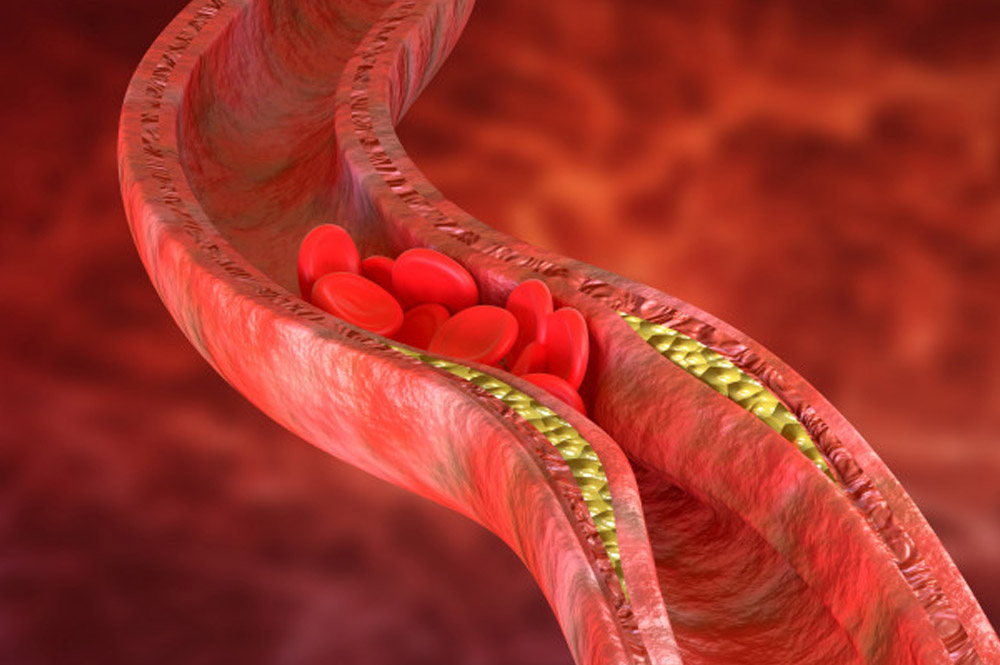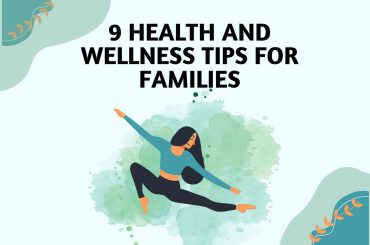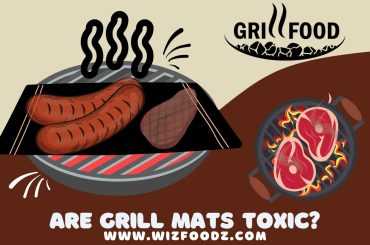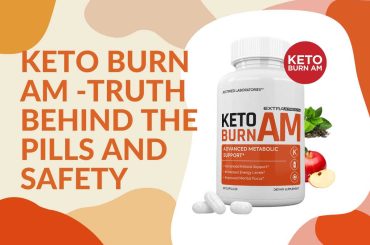Cholesterol
Cholesterol is a key component of the human body. It is essential to make cell membranes, synthesize vitamin D, hormones like estrogen, and testosterone. Cholesterol is synthesized within the liver. This synthesis process is reduced when too much of cholesterol-rich foods are taken. The excess cholesterol is removed from the body by the liver via bile. (1)
Cholesterol is transported within the bloodstream through lipoproteins. There are two types of lipoproteins as Low-Density Lipoprotein (LDL) and High-Density Lipoprotein (HDL). LDL is known as “bad cholesterol”, conversely HDL is known as “good cholesterol”. The bad cholesterol or LDL is responsible to carry cholesterol from the liver to the rest of the body whereas HDL is responsible to take cholesterol from body tissues back to the liver. When there is an excess amount of LDL present in the blood, they tend to deposit on the artery walls. This condition is called atherosclerosis which is furthermore leading to coronary heart diseases, stroke and peripheral vascular diseases (2)
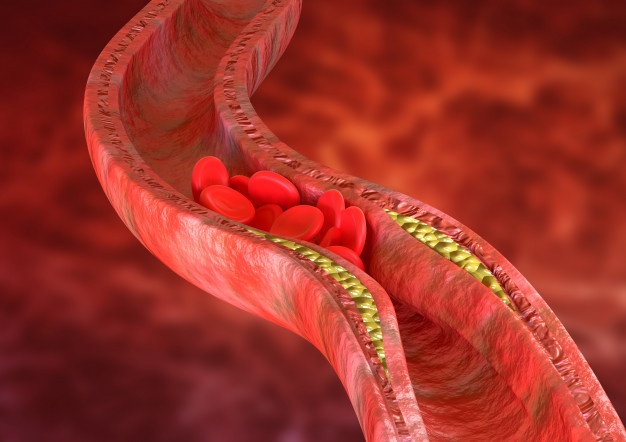
Dietary Cholesterol
In addition to synthesizing cholesterol within the body, it can also be obtained from dietary foods. Particularly, the amount of cholesterol in the blood depends on the amount and type of dietary fat intake. Most of the fat is stored in the body as triglycerides. Higher levels of triglycerides in the blood trigger the liver to synthesize cholesterol. Triglycerides are a combination of three fatty acids and one glycerol molecule. The three fatty acids may include any combination of saturated fatty acids, monounsaturated fatty acids, and polyunsaturated fatty acids. In addition to this, there are two types of essential fatty acids namely omega-3 fatty acid and omega-6 fatty acid. Both are polyunsaturated fatty acids that cannot be synthesized within the body. Trans fatty acids mimic the properties of saturated fatty acids. (3)
Health profile of Dietary fats
The following table mentions a Summary of the effect of dietary fats. Among the different types of fats, monounsaturated fats and polyunsaturated fats are considered to be beneficial. Obviously, excess blood cholesterol can be reduced by avoiding foods with trans fats, limiting the consumption of saturated fats and replace with unsaturated fats. (3)
| Type of fat | Mono-unsaturated fats | Polyunsaturated fats | Omega | Saturated fatty acid | Trans fatty acids |
| Effect on blood | -Reduces -Increases HDL | -Reduces -Reduces -Reduces HDL | – | – -Increases | -Increases -Increases LDL |
Beneficial foods to manage cholesterol
Your pantry is your first line of defense against food-borne illness and things like high blood pressure and cholesterol
Joe Bastianich
1. Nuts

Nuts like almond, peanut, walnuts, and hazelnuts are rich in unsaturated fats, fiber, vitamins, minerals, and phytosterols. Studies also have found that eating nuts can reduce the risk of heart diseases. Furthermore, phytosterols which are structurally similar to cholesterol, block their absorption.
Omega -3 present in walnuts, avoid the formation of blood clots. Moreover, almonds improve the cholesterol profile by decreasing bad cholesterol.
So replacing snacks with nuts will be more helpful to manage blood cholesterol. (4)
2. Fatty fish

Salmon, mackerel, tuna, trout, sardines, and herring are fatty fish enriched with omega-3. Obviously, omega-3 can reduce triglycerides. So adding these fish at least twice per week helps to reduce blood cholesterol. (5)
3. Fruits
Avocado is known to keep the heart healthy as it is composed of unsaturated fats, antioxidants, and vitamins. So it reduces bad cholesterol and triglycerides.
Moreover, lemon, lime, and orange like citrus fruits are loaded with fiber (pectin) and limonoid compounds. These compounds are capable of reducing bad cholesterol and atherosclerosis. Soluble fiber present in the diet binds with cholesterol in the digestive system. And eliminates them from the body before entering into blood circulation. In addition, Apples, papaya, strawberries, and grapes are fruits with a high amount of soluble fiber. Therefore, they help to reduce unhealthy cholesterol and prevent heart diseases. (6)
4. Vegetables
Vegetables rich in fiber, antioxidants, and low in calories are ideal for managing blood cholesterol. Examples for such vegetables are carrot, ladies’ fingers (okra), eggplants, and potatoes. Indeed most vegetables provide fiber and essential nutrients. So including a variety of vegetables for the main meals will help to reduce bad cholesterol. (7)
5. Whole grains
Some of the whole-grain foods are brown rice, oats, and rye. Whole grains reduce blood cholesterol as they have a high amount of soluble fiber. Undoubtedly, substituting refined flour with whole grains will be more advantageous to improve the lipid profile. (8)
6. Legumes
Type of plant food that includes beans, peas, and lentils. This food variety is also composed of soluble fiber, proteins, and minerals. Therefore replacing red meat with legumes helps to reduce bad cholesterol. (9)
7. Dark chocolate
Cocoa is the main component of dark chocolate. Flavonoids in cocoa reduce bad cholesterol and increase good cholesterol. Especially remember to choose dark chocolates with 75% or more cocoa content as chocolates have high sugar content. Moreover, using cocoa powder alone is a better option to avoid high sugar consumption. (9)
8. Tea

Black tea and green tea are rich with catechins, a type of antioxidant. Undoubtedly, antioxidants responsible to reduce bad cholesterol and improve lipid profile. Therefore make a habit of drinking a cup of black/ green tea per day. (9)
9. Oils
Particularly, there are wide varieties of heart-healthy edible oils with low saturated fats and high unsaturated fats. These oils are liquid at room temperature and get thicken when cooled or refrigerated. Olive oil, sunflower oil, safflower oil, peanut oil, avocado oil, sesame oil, flax-seed oil, corn oil, and soybean oil are examples of heart-healthy nontropical oils. Obviously, the cholesterol profile can be improved by replacing unhealthy tropical oils with non-tropical oils, for cooking purposes. (10)
10. Dark green leaves
Spinach like dark green leaves contains lutein and carotenoids that help to reduce heart diseases. Furthermore, they bind with bile acids and excrete excess cholesterol. Spinach also promotes the body to produce Nitric Oxide (NO) that dilates blood vessels and avoid the occurrence of atherosclerosis. (9)
Risky foods to avoid
11. Whole milk dairy products

Whole milk dairy products like cheese, yogurt, and ice cream contain cholesterol. Also high in saturated fats. So whole milk dairy products can be replaced with skimmed milk or low-fat dairy products. (13)
12. Red meat
Red meat like beef, pork, and lamb have a high risk of increasing blood cholesterol. In addition to this, they can worsen existing heart diseases as they contain more cholesterol and saturated fats. Removing the skin of meat before cooking will help to reduce a higher amount of fat. The organs like the kidney, heart, and liver are highly cholesterol-enriched parts. The visible fats can be cut off when preparing meat. (11)
13. Tropical oils
The most widely used edible oils are coconut oil and palm oil. Also, these are tropical oils high in saturated fats leading to increase the risk of heart diseases. The risk is minimum when tropical oils are replaced with vegetable oils that have low saturated fat content. (12)
14. Baked foods

Cookies, cakes, pastry, french fries, and crackers are cholesterol-raising foods with a high amount of saturated and trans fats. It is important to have a practice of referring to the labels of foods before buying. As it will make sure whether they contain less or no bad cholesterol. (14)
15. Bacon, sausages
Sausages and bacon are types of processed meat. Additionally they are high cholesterol foods. It is better to avoid processed meat products as much as possible. (15)

